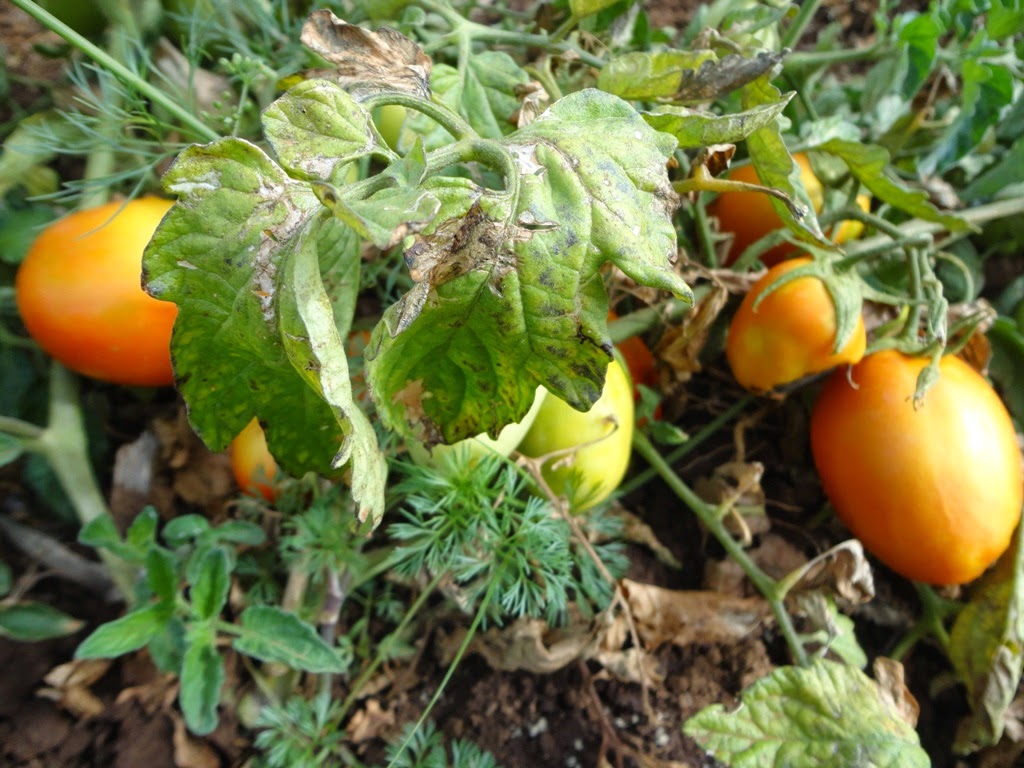Tuta absoluta (known in Nigeria as Tomato Ebola) is a very harmful leaf mining moth (also known as tomato leafminer) with a strong preference for tomatoes. It also occurs on eggplants, sweet peppers as well as potatoes and various other cultivated plants. It also occurs on weeds of Solanaceae family (Solanum nigrum, Datura spp.). Tuta absoluta can cause 50-100% yield reduction on tomato crops and its presence may also limit the export of the product to several destinations.
Preventive measures against Tuta absoluta
1. Make sure the greenhouse and its direct environment are free from old plants, fruit and weeds to prevent carry-over of the pest from the previous culture to the new crop.
2. Prevent adults (7-10 mm) from entering the greenhouse by closing all ventilation openings with insect netting. Netting used against aphids (6-9 holes/cm2) is fine enough to withstand Tuta absoluta. Repair all holes in the plastic walls and roof material. Create a double door at the entrance of the greenhouse.
3. Start with plants free from any stage of Tuta absoluta. Monitor with Pherodis pheromone traps in the propagation area.
Non-chemical measures against the different stages of Tuta absoluta
1. The predatory bugs Nesidiocoris tenuis (Nesibug) and Macrolophus caliginosus (Mirical) are effective predators of Tuta absoluta eggs and young larvae. A quick establishment of these predatory bugs in the crop gives the best protection against the pest. Introduce the predatory bugs several times during the first weeks of cultivation in a total dose of 1-2 bugs per m² or until the bugs are sufficiently established in the crop.
a. Avoid broad spectrum pesticides in open field tomatoes in order not to disturb the development of indigenous population of predatory bugs.
b. Delayed deleafing helps to boost the development of both Nesidiocoris and Macrolophus in the crop.
Only use products that are permitted in your country or state!
2. Pherodis pheromones used in Tutasan water traps catch many male adults, up to 300 per trap per day. This measure will slow down the reproduction of the population. Use 20-50 traps per hectare inside the greenhouse, depending on the situation. Renew the Pherodis pheromone capsules every 6 weeks. Also place some traps in the direct surrounding of the greenhouse.
3. If the pest occurs in hot spots, remove infested leaves (and fruit) with larvae and destroy.
4. Caterpillars move out of the mines several times in their development. Preventive and regular sprays with Bacillus thuringiensis can kill the caterpillars in this phase, thus contributing to the control. However, note that intensive B. thuringiensis sprays can leave residue on the fruit, so apply this only in the early phase of the crop.
Chemical corrections
The above mentioned measures may be insufficient for total control of the pest. In that case chemical interventions are needed to keep the pest below the economic threshold. High volume sprays with pesticides based on spinosad or indoxacarb have shown the best effect, but still may have some impact on biological pest control or natural pollination. Always use these products at recommended dose, respecting the local rules. Restrict the number of applications per season to avoid resistance. Consult your consultant to evaluate the effect of the chemical interventions and their effects on the population of the natural enemies.
Source: koppert biological systems

